Divers
Divers
have since long had a close relation to the Submarine arms and Subsafe. As a
consequence of a great investigation on submarine safety 1932, diving
activities became closely connected to the submarine flotilla and the
submarine salvage ship HMS BELOS 1. The divers primary education took place
at the Karlskrona base and in Stockholm with support of the Navy yards in
those places. Resources were assembled at the Divers test tanks were the
divers courses were administered. Diver’s boats ”launches” were to be found
in all navy districts.
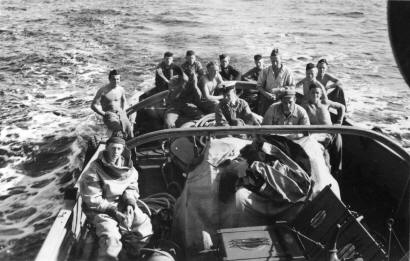
Divers course 1947 under way on the divers launch. Photo U3 archives.
Divers’
practicing was sometimes combined with salvage operations.
So was for instance the salvage operation of the German type
XXI sub, U3503 carried out by that year’s course of heavy
divers. Later a similar task was the salvaging of the 17th
century man of war VASA.
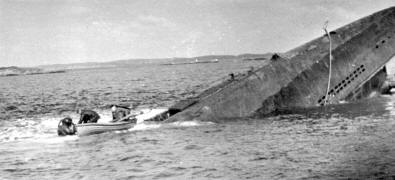
Diving at the U 3503 1946. Photo U3 archives.
The
divers were trained on a submarine mockup to learn the
technique of affixing the hauldown wire of the rescue bell.
On special occasions this was tested on true submarines.
They were also trained to connect HP-air hoses for blowing a
submarine to the surface.
Picking
up lost items and particularly lost torpedoes become a
standard task.
Diving deeper than 40 metres required
special training performed on the HMS BELOS.
Deep diving divers could work down to approx. 75 metres.
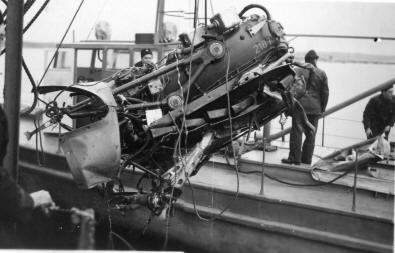
An aircraft engine is salvaged by navy divers 1949. Photo U3 archives.
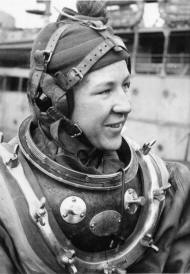
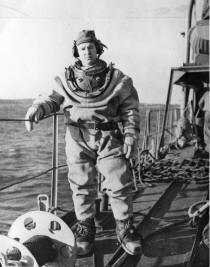
Hard hat divers onboard the HMS Holmön, a mine sweeper. Photo U3 archives.
Submarine salvage pickets were organized within each navy
district. On the Swedish west coast there was a second
rescue bell together with further equipment for diving and
mooring. The submarine picket regularly practised rescue
operations, utilising local pilot ships as carriers for the
rescue bells named SVEA and GÖTA.
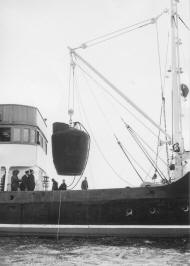
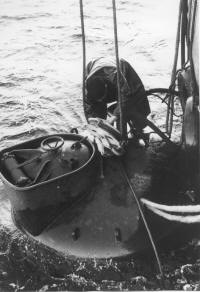
Rescue practice with a pilot ship. To the right the rescue bell GÖTA. Photo U3 archives.
The
Navy also had light divers as clearance divers, attack divers and ships
divers.
Diving technology today is more refined including mixed gas apparatuses.
Noticeable is the development of the divers suits from the old days dry suit
via wet suits back to dry suits and more refined suits including heating
gear

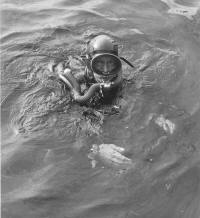
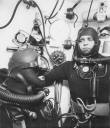
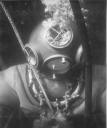

Photo U3 archives.
Every submariner was trained in free escape in the special
diving tank. In the beginning this meant utilizing breathing
apparatuses and operation of the lockout equipment in the
training tank and on board. Later the breathing apparatuses
were abandoned and a built in breathing system, BIBS was
introduced for supplying breathing air until the moment of
leaving the boat
To
maintain skill in free escape, a test was performed each year including
medical examination of each submariner.
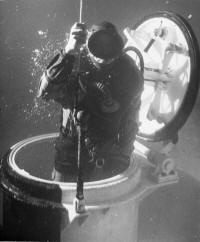
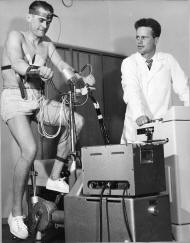
Training in the diving tank and medical check. Photo U3 archives.
For those interested in the history of diving, there is a Diving History
Society at the old Navy yard in central
Stockholm, homepage
http://www.sdhf.se/